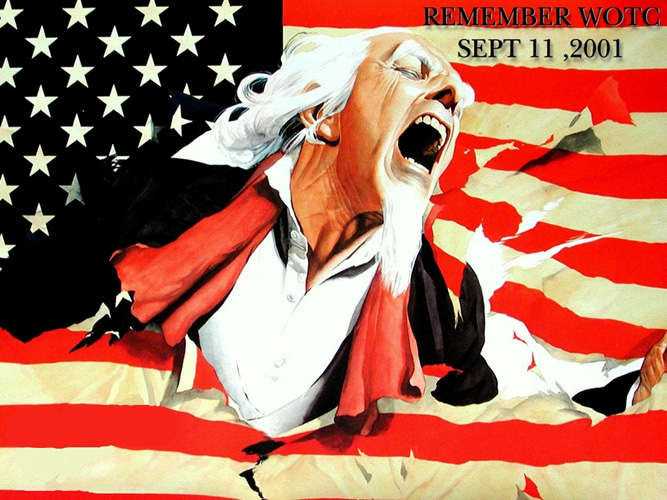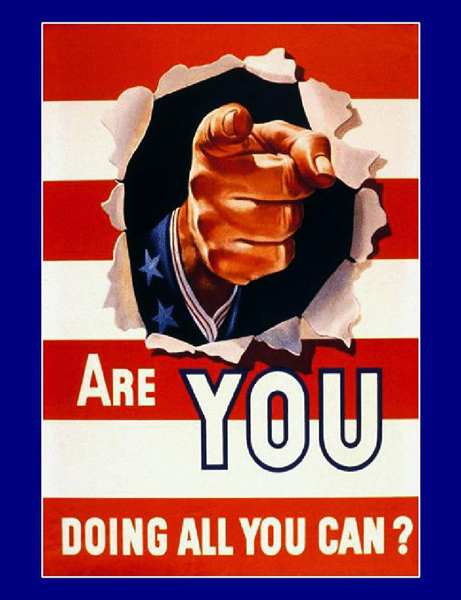| Uncle Sam is one of the most iconic figures in
American propaganda. He has appeared in numerous posters,
advertisements, parodies, television shows, and just about any other
media source you could name. This is the earliest Uncle Sam poster I
could find. In this 1917 poster, Uncle Sam is most definitely the main
force of interpellation. He is wearing the hat and suit that he wears in
all of the other posters he will later appear in, although the stars on
the breast of the suit are actually only in this poster. The anchorage
in the image is asking the viewer to volunteer, and lists the different
branches of the military that one could join. By giving the viewer
options, Uncle Sam is using a propaganda technique that allows the
viewers to become more comfortable and not simply blow the ad off as the
propaganda that it is. The target audience of this poster is likely
younger males, much like the early Navy, Marines and Army posters. This
is mostly due to the era in which they were prominent. |  |
 | This is the most current
image including Uncle Sam that I could find. It was released shortly
after the September 11th attacks. In this image, Uncle Sam is missing
his trademark hat that often tells us who he is. The colors of his
jacket are also darker than in most of the images. Also, his bowtie is
undone. In fact, if it wasn't for the context and the unique beard that
Uncle Sam has, it would be difficult to determine if this was him or
not. The most striking and interpellative imagery in this poster, to
me, is the look on the old man's face. He is screaming in what appears
to be pain or anger, or possibly a mixture of the two. There is no
mortise or anchorage except the cryptic "Remember WOTC, Sept. 11, 2001".
This could possibly be the most powerful form of propaganda. Most
propaganda uses rhetorical devices to sway the audience and convince
them of some form of truth. There is no convincing to be done here,
however. Uncle Sam knows what happened that day. The audience knows what
happened that day. Nothing more need be said aside from the shared rage
that the poster urges us to feel through the ethos carried on Uncle
Sam's face. |



